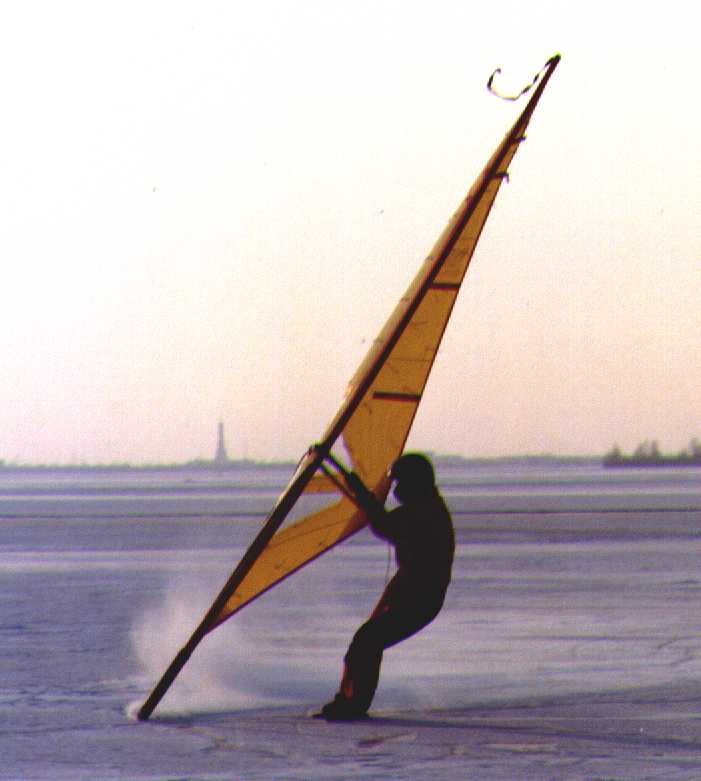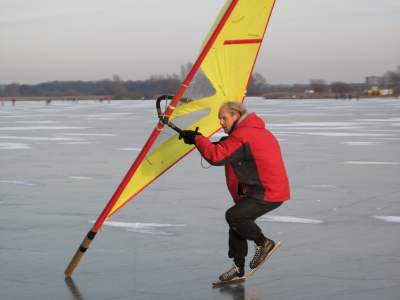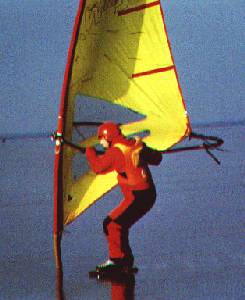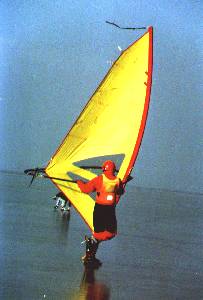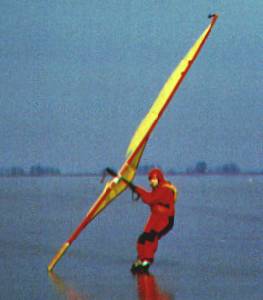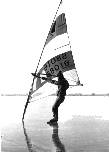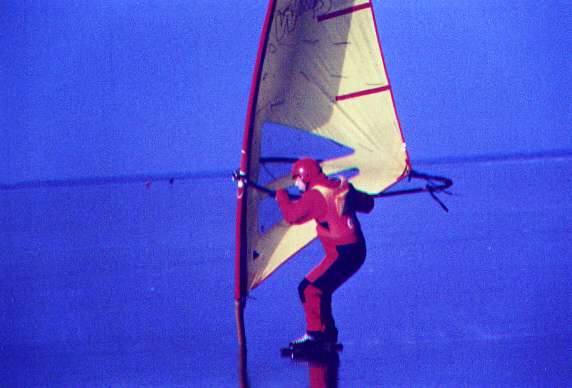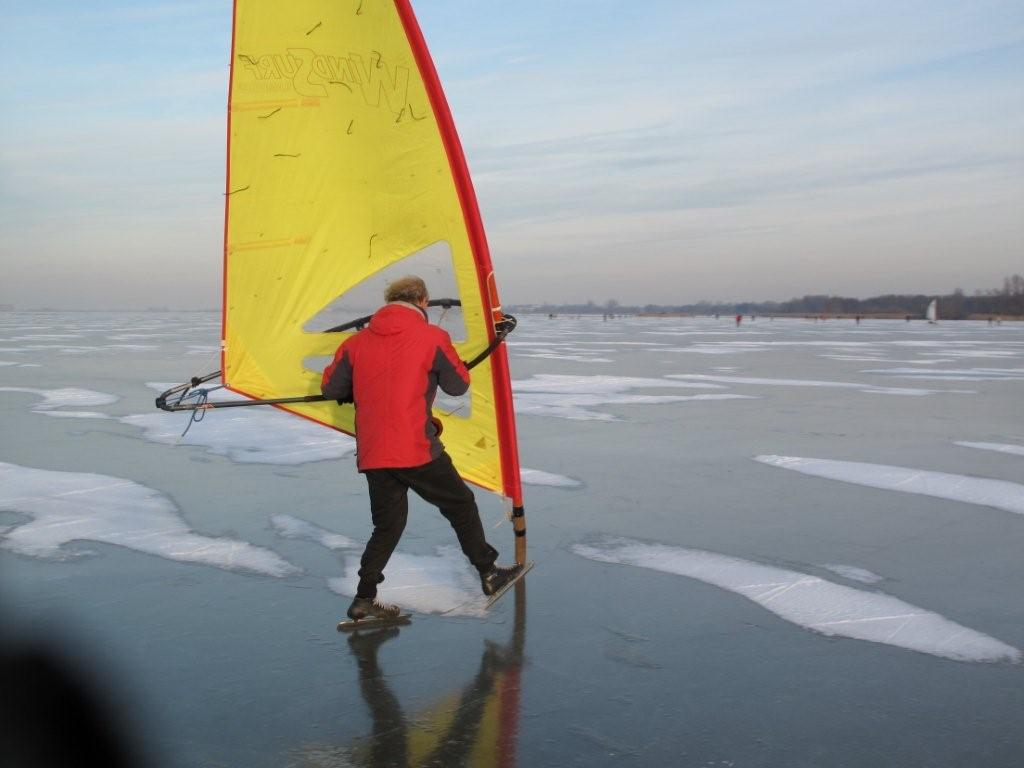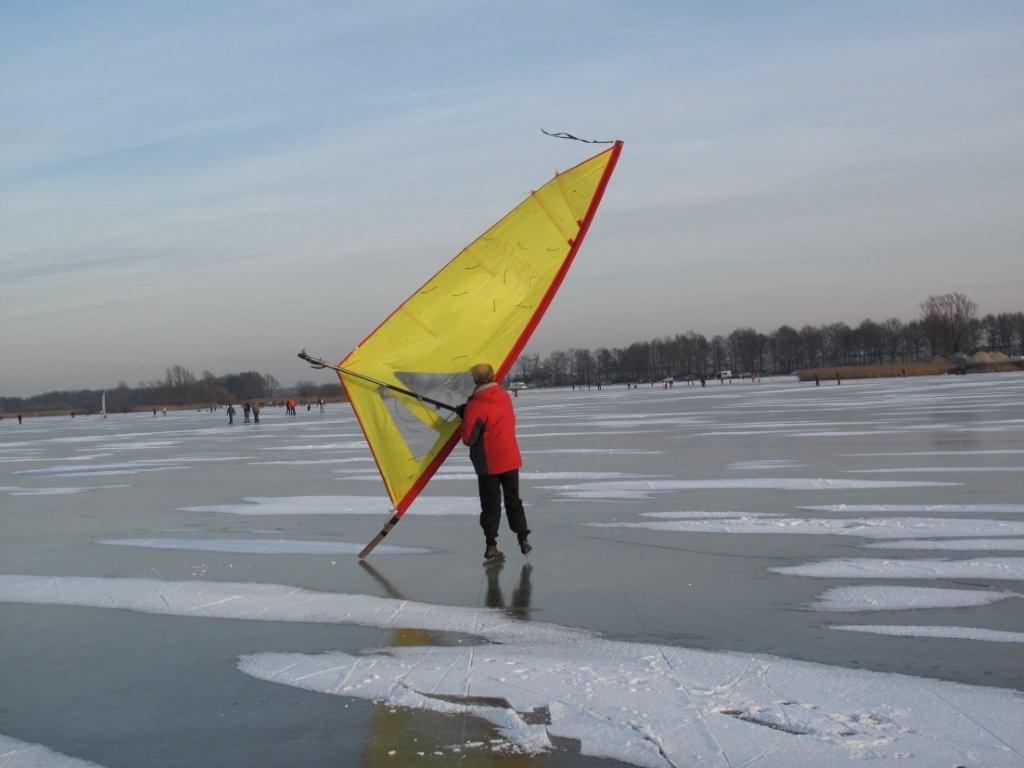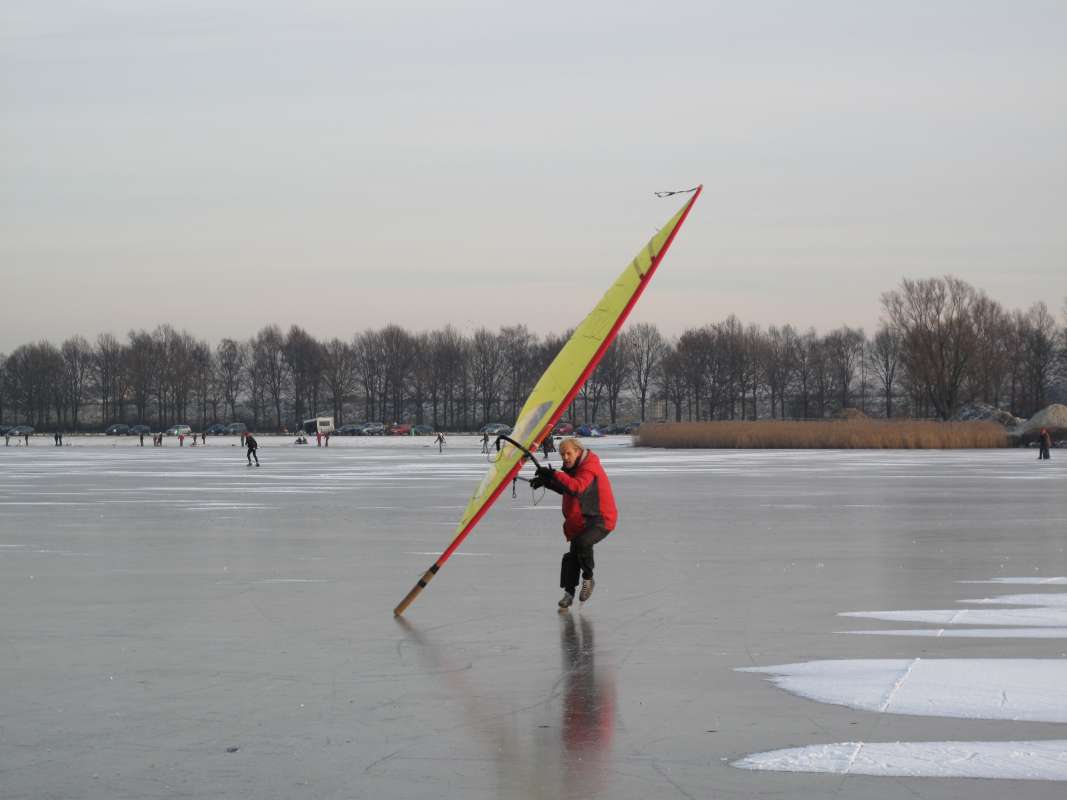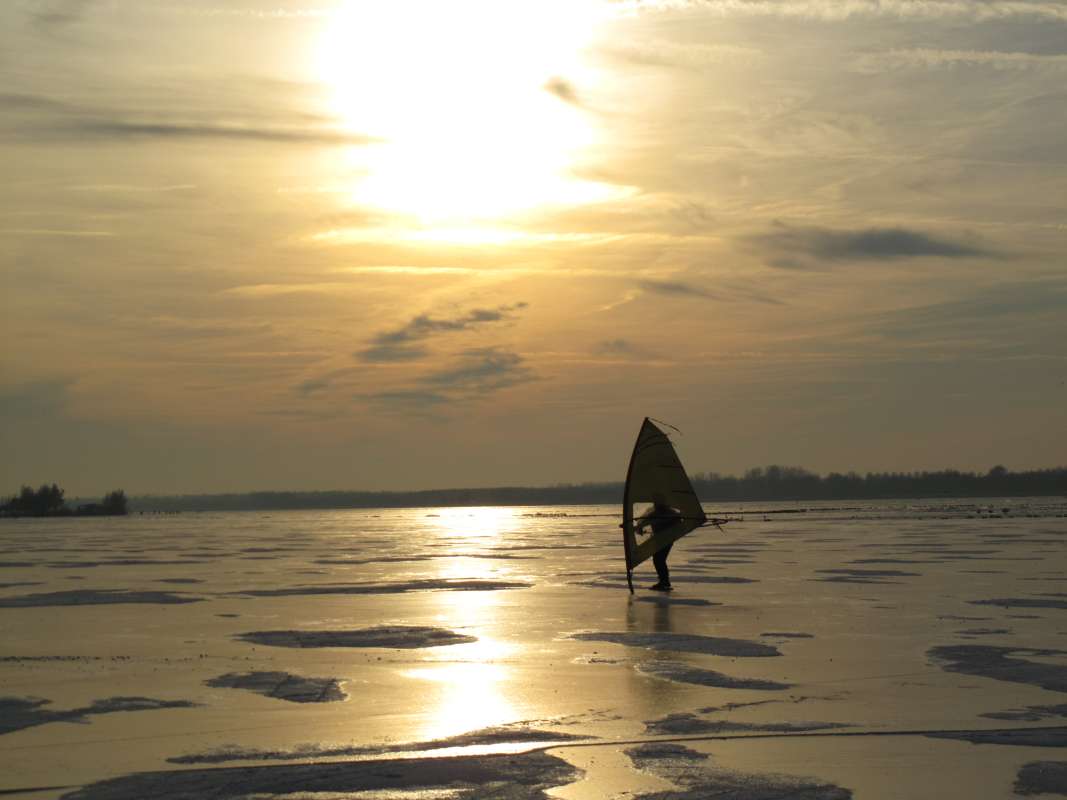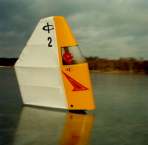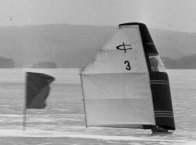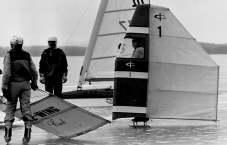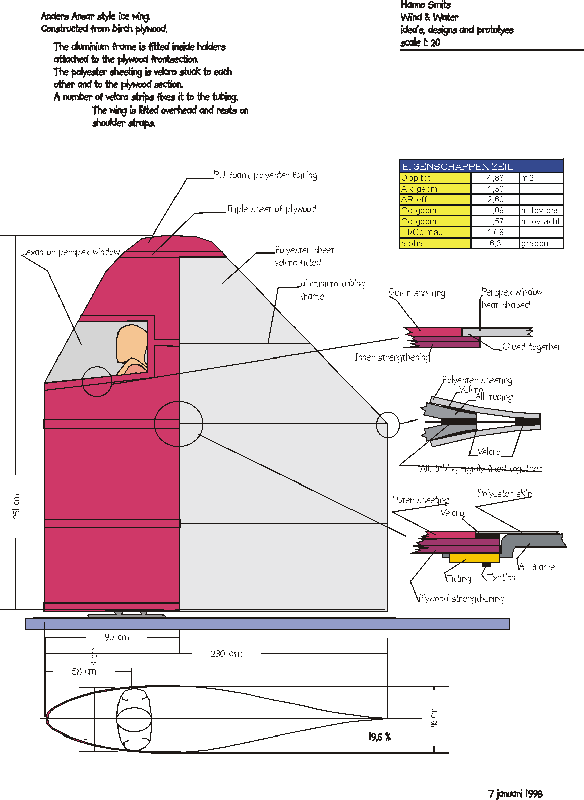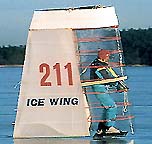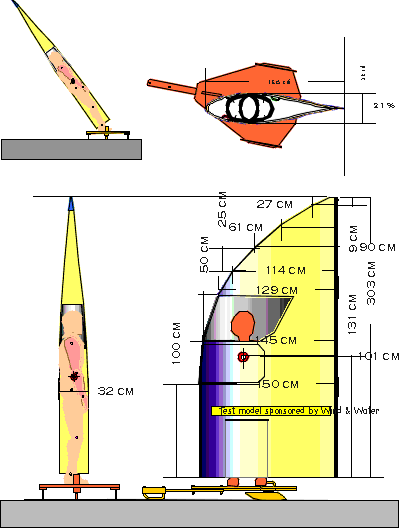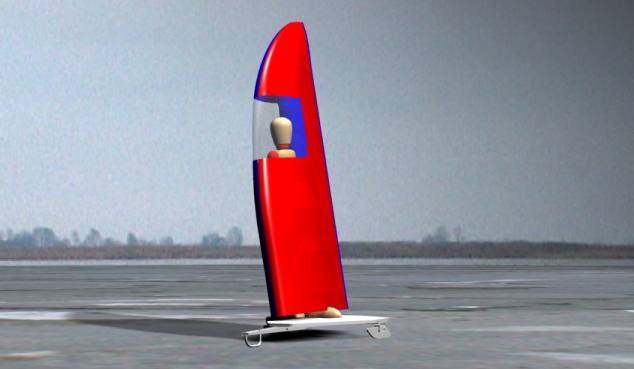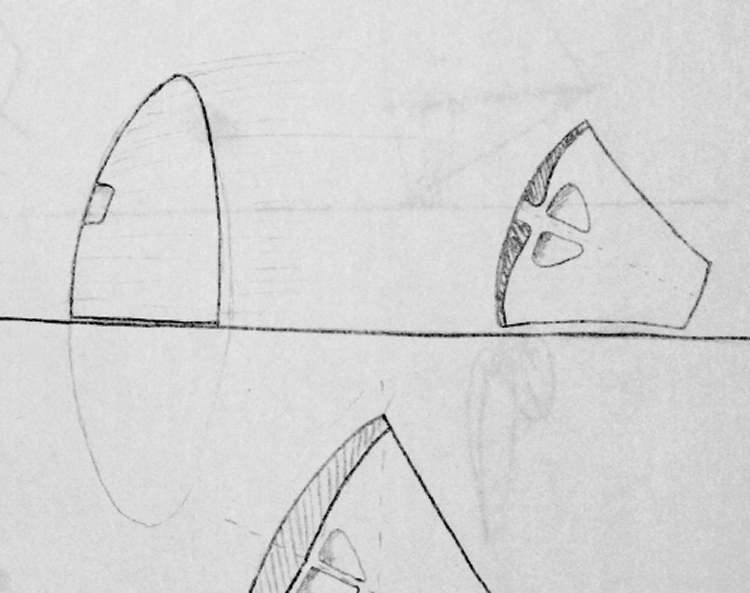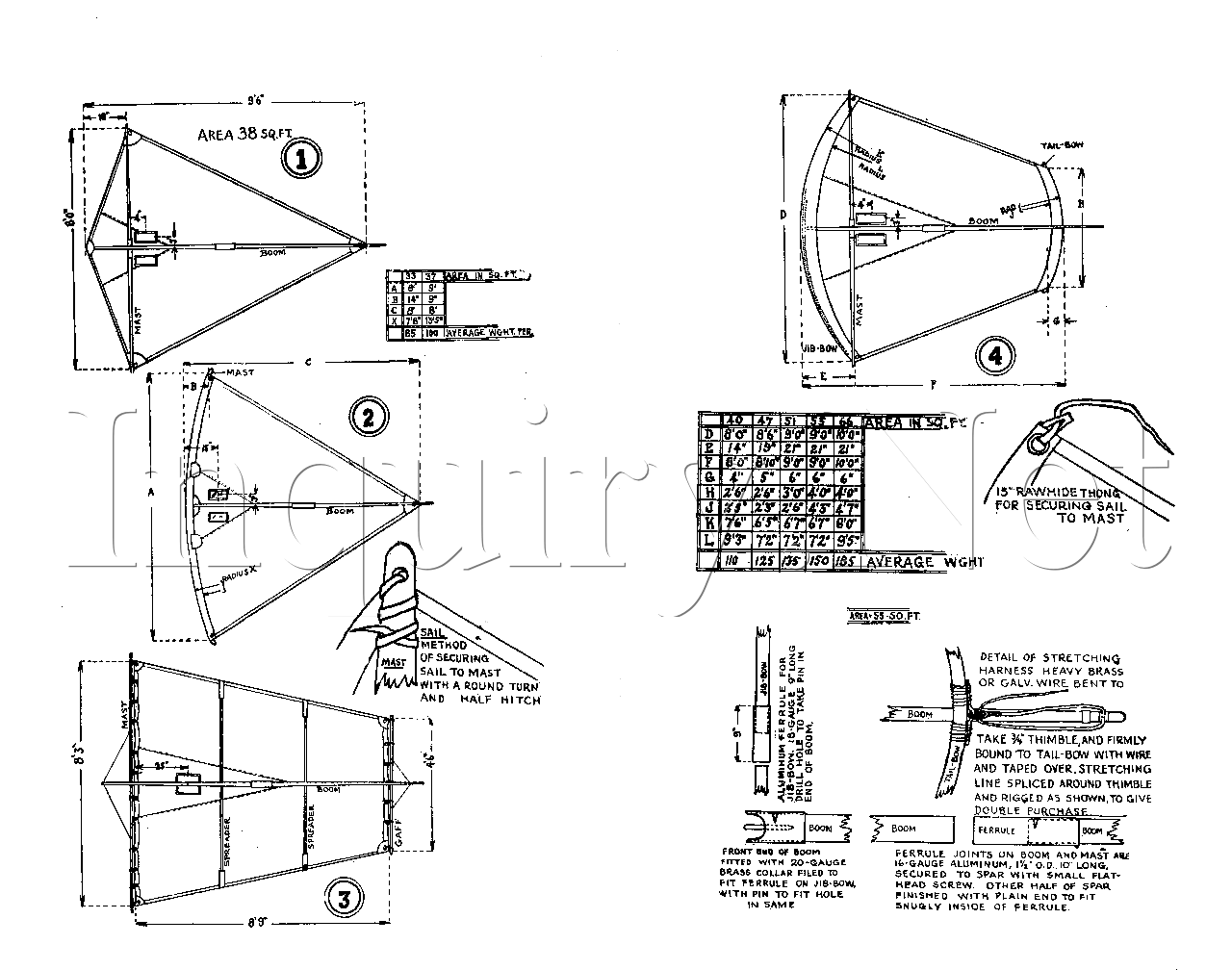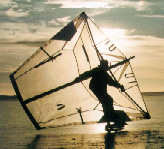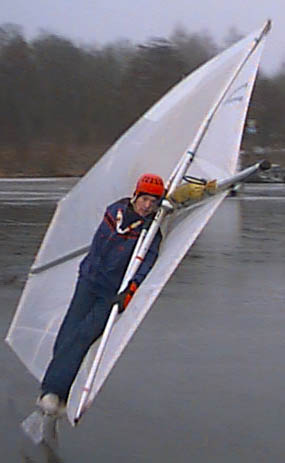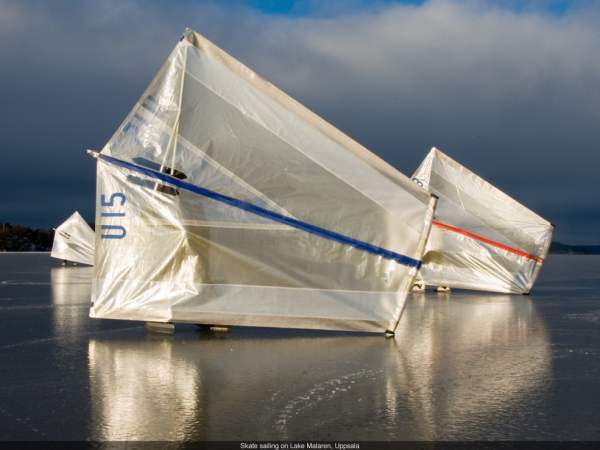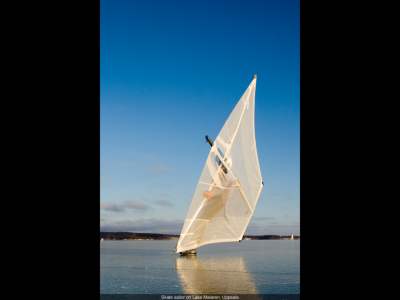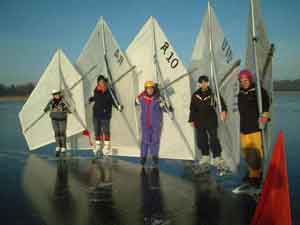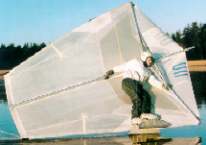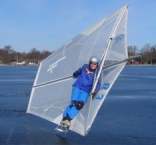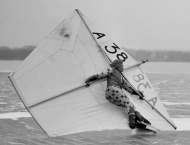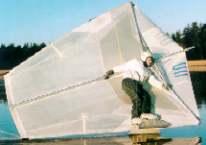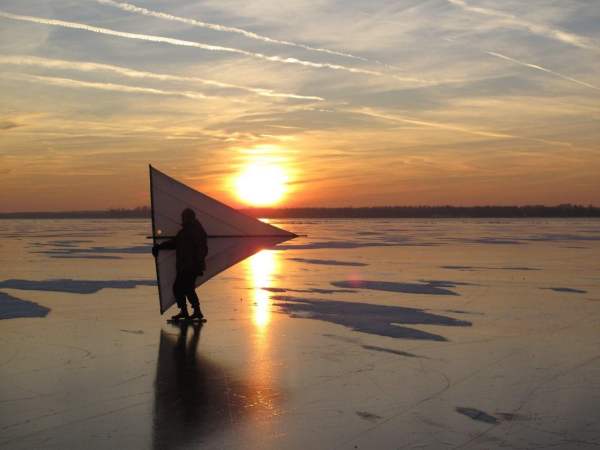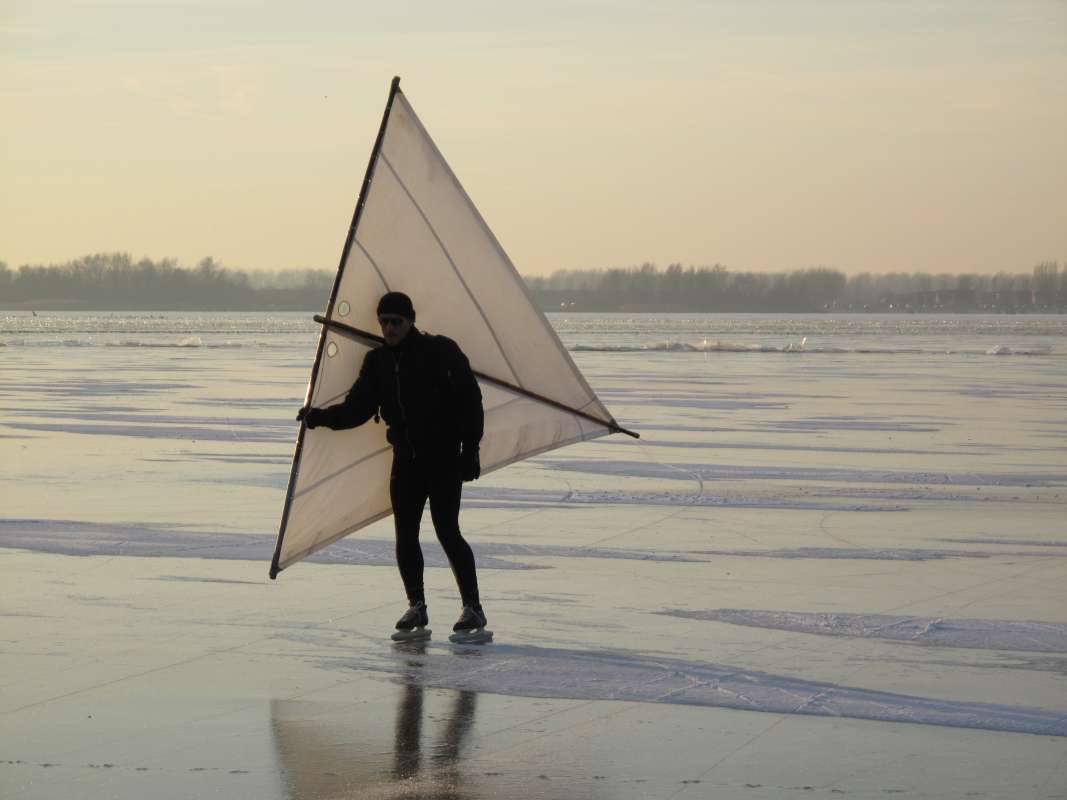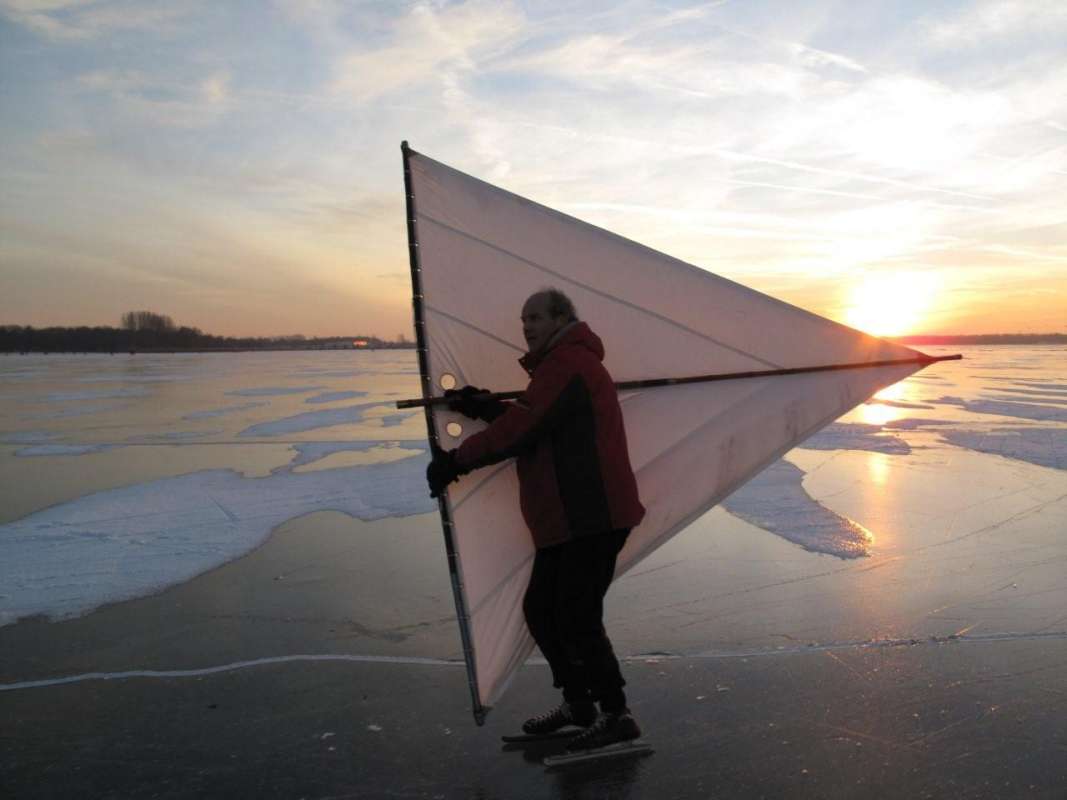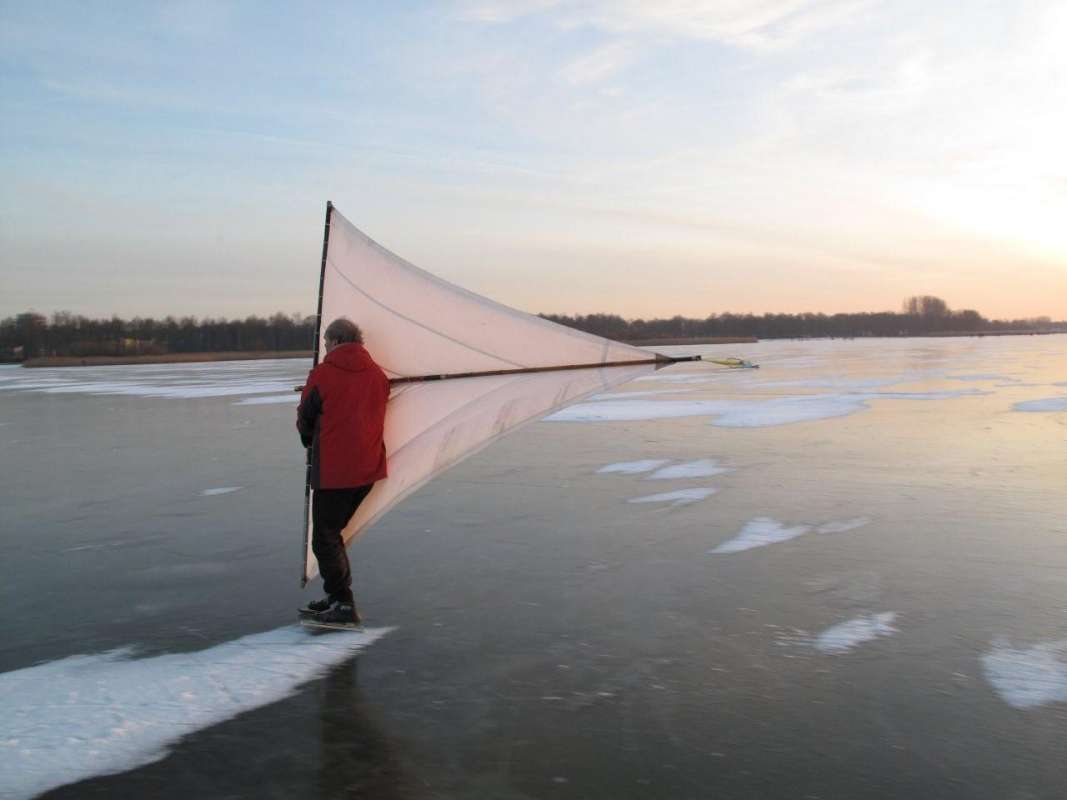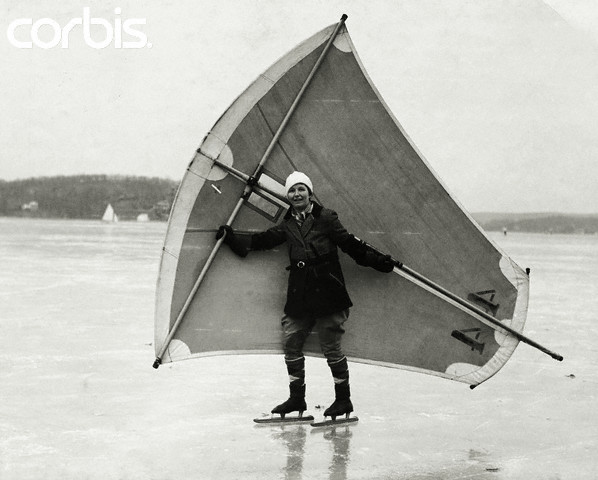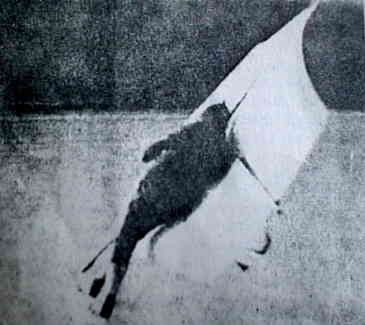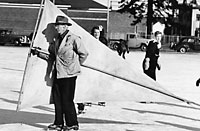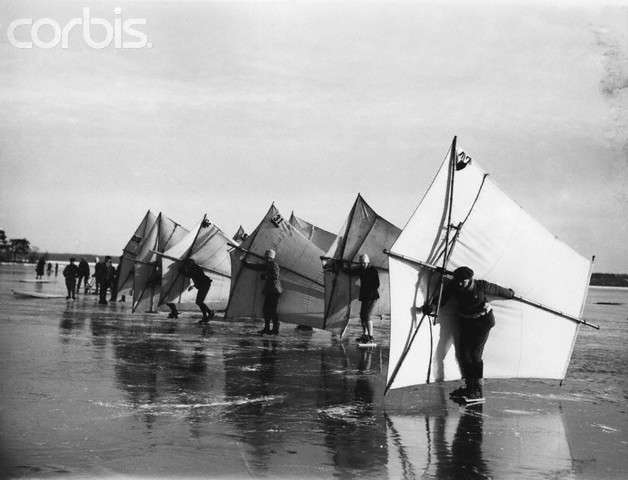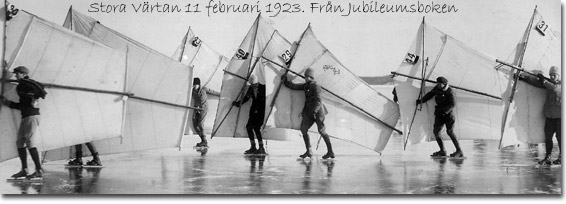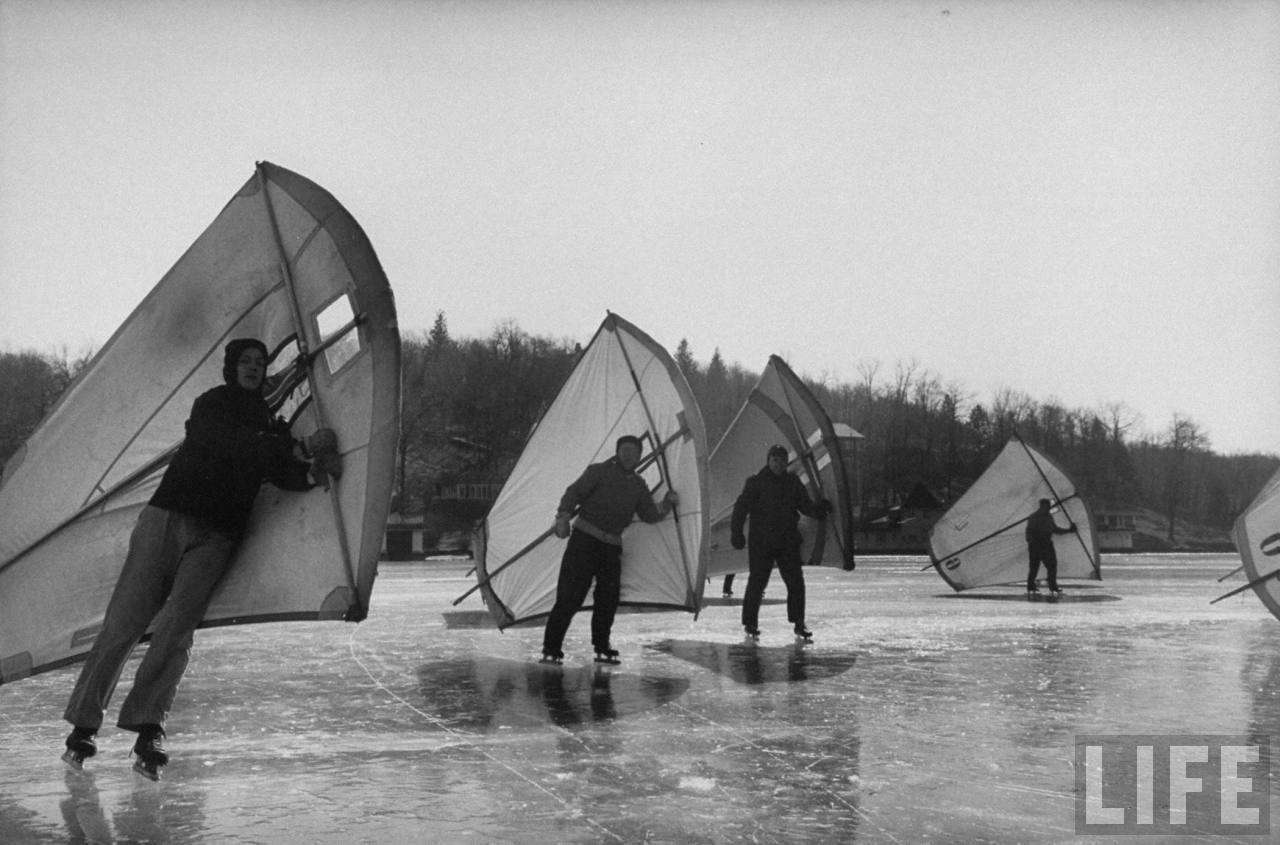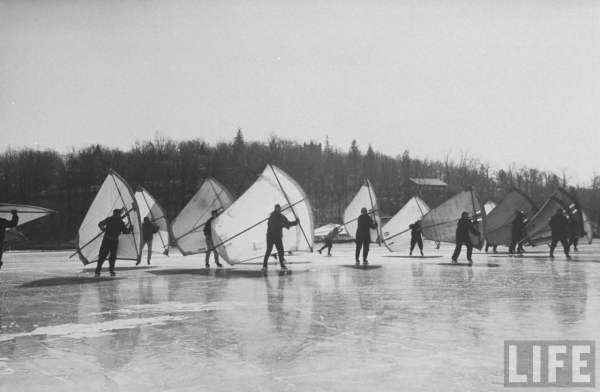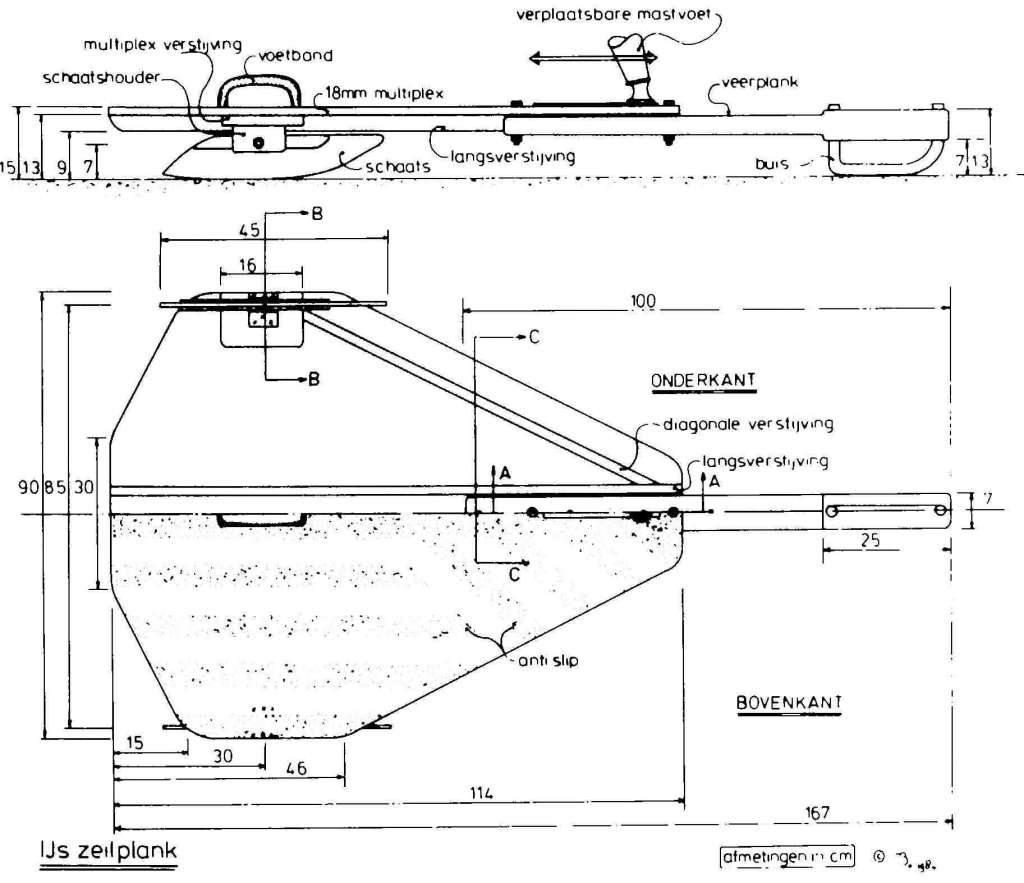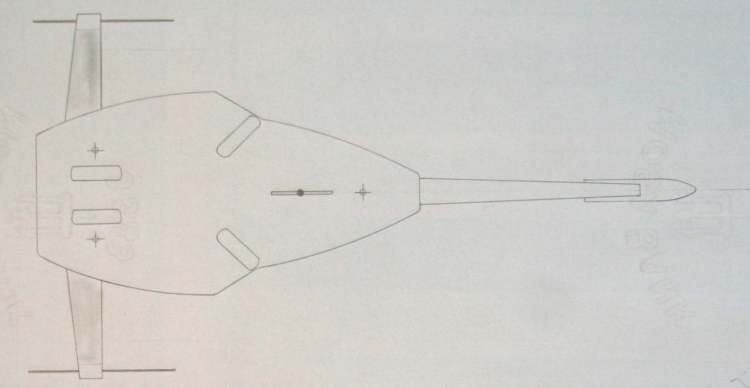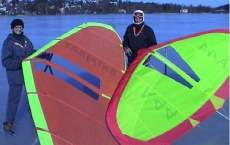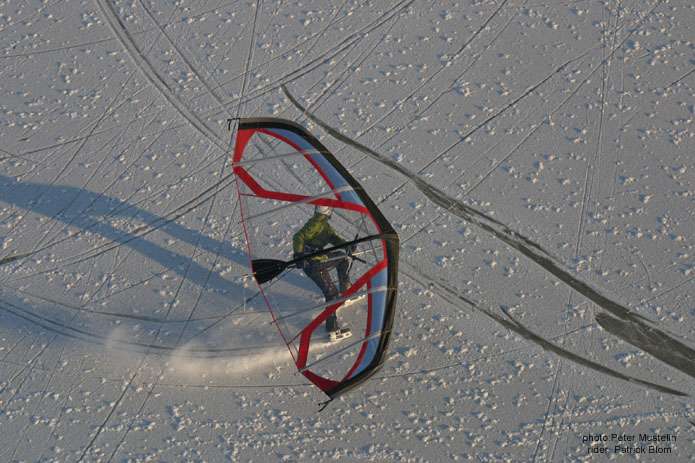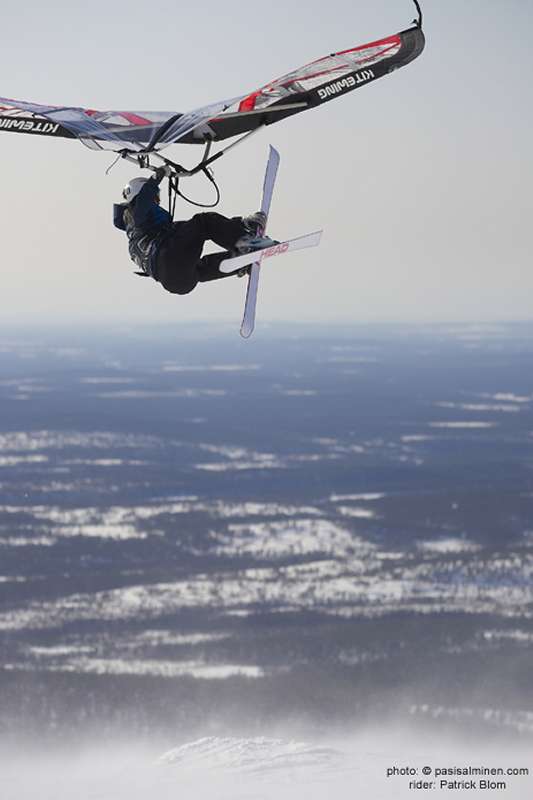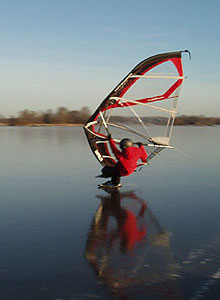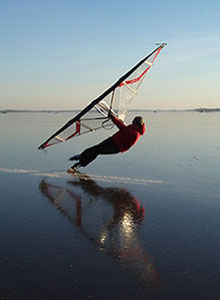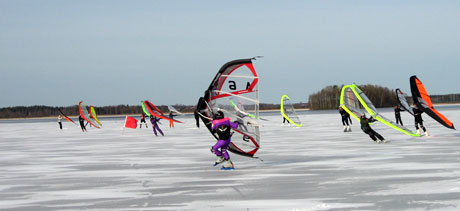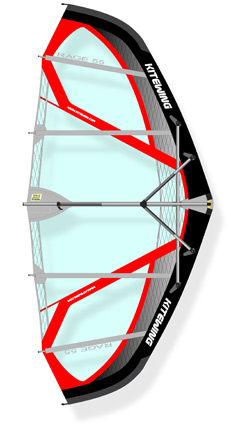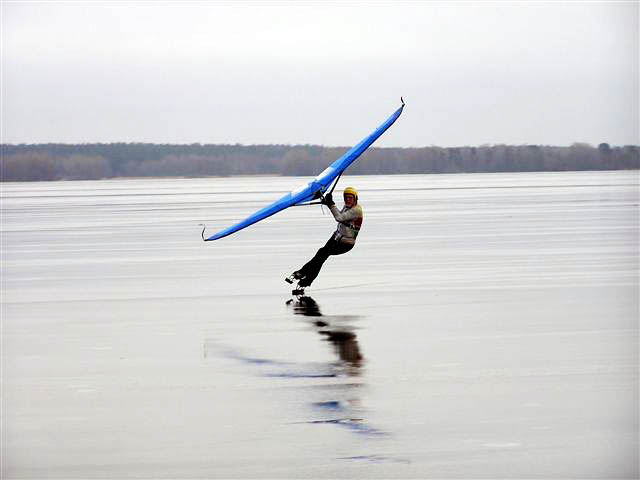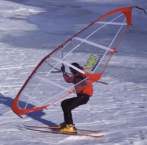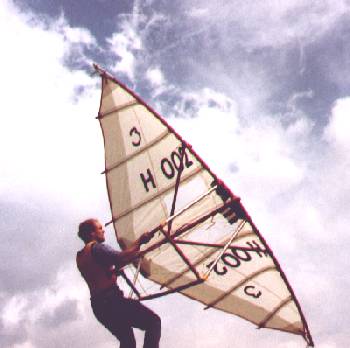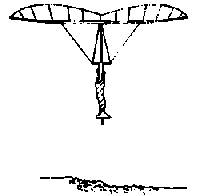Ice-sailing on normal skates.
There are all kinds of phantastic ice-sailing machines, but this webpage is dedicated to the simplest and easiest forms of ice sailing, using your own (speed) skates.
Stick ice sailing invented by just fooling around.
One wintery sunday wanting to ice sail led to going to the ice with several windsurfing sails and some sticks. Later that day fitting a 60 cm 8cm diameter hardwood "foot" to the surfsail resulted in this very simple, fast, versiatile, cheap invention.
Even some snow covering the ice is no problem. When you start sailing like this you wil at first think it is impossible as balancing the sail feel awkward at first. Remember, it is a simple balancing act of forces, and the stick will will have to be relatively forward and the rig relatively tilted. Good Luck and enjoy.
On several of the pictures you see one foot lifted of the ice, this does not mean inbalance, to the contrary, sailing is so stable that all side-force can come from one skate.
Always choose a spot where there are not too many skaters. You will be traveling in excess of 80km/h very easily. Skaters will be curiuos, You are responsible for their safety. Always wear a helmet. We have never made a heavy fall, but cracks in the ice can make you tumble. The sail will easily cope with crack but will you??
Ice wing fastest fun.
If you have some more time and are a good crafts man you van also build a stand inside ice wing. The idea is Anders Ansar's. You can get some more details on his skate sailing page.
The problems they are experiencing at the moment are: A large profile thickness ratio because of the transverse stance of the skater (app 50cm) and also the large resulting cord. This large cord and the limited possible sailarea in ice sailing result in a low aspect-ratio, and the connected low aerodynamic efficiency. Decreasing the speed potential, which still is very high.
Nevertheless, this system is the best there is at the moment. The parasitic drag (skater or icesailer) are non existent.
Aerodynamically the ice wing can be improved by decreasing the relative profile thickness (Thickness/cordlength). Above approximately 20% relative thickness, the profile efficiency decreases quite quickly.
This choice in wing-profile will also result in a higher aspect ratio (span^2/sailarea), because the cord can be shorter, when the absolute thickness is decreased.
The aspect ratio of a wing is also very important in wing-efficiency. This efficiency can be expressed as the maximum Lift/drag ratio of a wing. For the new proposition this is approximately 25.
Standing sideways poses the problem of skates. You could use skates with angled blades. For starters I think the more pragmatic approach would be, using an ice surfer as platform.
The ice wing will fit like a jacket. This highly restricts body movement. It is necessary to make two small self-closing doors, to allow you the take up a wider stance when needed.
Below you'll find limited resolution picture of part of the design drawings. The sail will be made out of polyester sheeting with a perspex window.
If you are interested you can save the complete design drawing, presented below, just ask for a higher resolution version.
Once you have built your stand inside wingsail, please register your wing with Ansar Anders. He not only developed the wing but also keeps track of wingsails. His homepage reference is on the link page of this website.
The stand sideways wing is expected to work very well, even a larger sail area is also possible. This will increase the aspect ratio and the maximum lift/drag ratio to approximately 32. The speedpotential with this aerodynamic efficiency is very high.
Skate ice sailing
Traditionally skatesailing was done with a sail like the pictures show. In Sweden this seems still to be a wintersport. Take a look at google Skridskosegling
Skate ice sailing historical
Windsurfing style icesailing
Using easily available materials it is possible to build a windsurfing style ice sailer. The design is presented on the idea's & design page. Basically it consists of two skates and a non carving front runner.
This non carving runner is absolutely neccessary because a carving runner will not allow you to steer in the normal windsurfung fashion, by heeling te sail more or less forward and using the sailforce to turn the icesurfer.
I personally use a braking system. This makes it possible to sail without the DN type boots, with scraping irons. These boots ruin your iceboard.
This particular design is very popular in the Netherlands. It featured in a winter issue of a windsurfing magazine. It works very well for its type and allows for all kinds of racing adaptations. The design also offers the possibility to fit different skates for different ice conditions (like all the iceboats).
Building a windsurfer style icesailer is withing reach of most skilled craftsmen. It is however necessary that you have access to welding equipment.
If you would like to build the design you can save the below drawing, or simply ask for a higher resolution version.
Kitewing
Luckily some scandinavians pursued this idea and built the Kitewing. All the things I had in mind with my prototype seem to have been realised, haven a look at their website www.kitewing.com
Youtube has some great video"of guys jumping of dikes on their rollerblades and there is also a sequence of a flying skier.
Below I show some pictures to inspire you. I will almost certainly buy a kitewing before next winter.
The last two pictures starting with the photograph shows the first prototype of a flying windsurf rig. It was the intention to really fly with it, as the sketch shows. It can easily lift itself and its control is simple.
Only after starting to hangglide did I realize that my prototype was grosely overweight. When using hanggliding building techniques I am sure an increase in size and decrease in weight is possible.
Wind & Water Try, Play, Learn and Enjoy..


 Skate sailing
Skate sailing